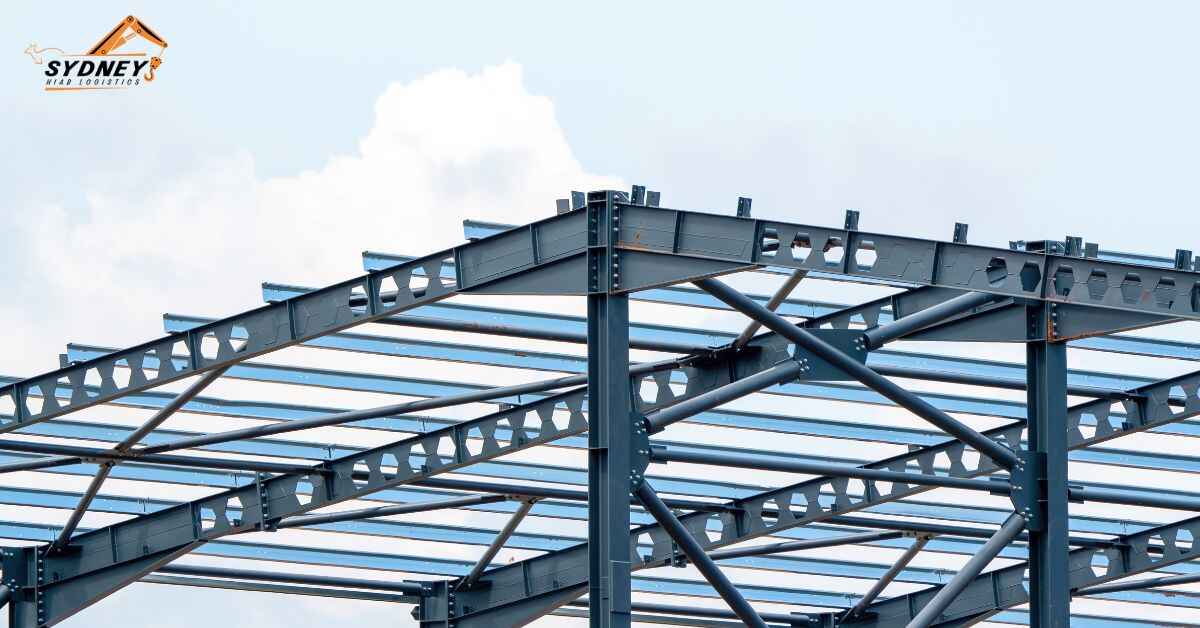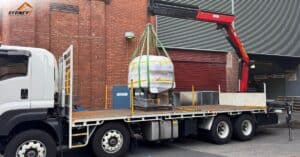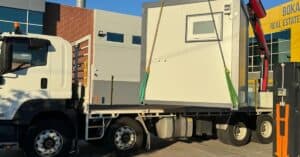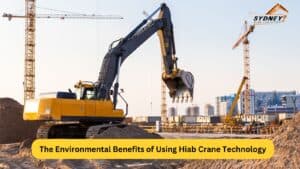Transporting steel is no easy feat due to its weight, size, and complexity. Whether you’re moving steel beams, pipes, or sheets, the process requires precision, strength, and efficiency. Traditionally, steel transport involved multiple pieces of heavy machinery, manual labor, and time-consuming processes. However, with the introduction of crane trucks, steel transport operations have become significantly simpler, safer, and more efficient.
Crane trucks, also known as HIAB trucks or mobile cranes, combine the capabilities of a crane and a truck into one versatile vehicle. This integration allows companies to streamline their operations, reduce costs, and ensure that steel materials are handled with the utmost care. In this blog, we’ll explore how crane trucks are transforming steel transport operations and why they are essential in the industry today.
1. Eliminating the Need for Multiple Machines
Before crane trucks became commonplace, transporting steel involved separate machinery for loading, unloading, and transportation. A traditional setup would often require forklifts or cranes at the warehouse to lift steel onto the flatbed of a truck, followed by a separate crane or similar equipment at the destination to unload it. This reliance on multiple machines not only increased the time needed to complete the job but also added to operational costs.
Crane trucks streamline this entire process. With a built-in crane attached to the vehicle, steel can be loaded, transported, and unloaded using just one machine. This eliminates the need for additional cranes or forklifts, reducing logistical complexities and saving on equipment rental and labor costs. The entire process becomes more seamless, making operations more efficient.
2. Enhanced Flexibility and Maneuverability
One of the standout features of crane trucks is their flexibility and maneuverability, especially in environments where space is limited. Traditional cranes often need ample room to operate, which can be a challenge on busy construction sites or in urban areas with tight access points. Crane trucks, on the other hand, are designed to operate in a variety of settings, including congested areas, narrow streets, and restricted job sites.
For steel transport operations, this flexibility is invaluable. Crane trucks can easily access areas where large cranes may struggle, allowing for precise placement of steel materials. Whether you’re delivering steel beams to a high-rise construction site or navigating through a narrow industrial complex, crane trucks can get the job done with minimal disruption.
3. Improved Efficiency in Loading and Unloading
In steel transport operations, time is often of the essence. Every minute spent waiting for materials to be loaded or unloaded can lead to delays and increased costs. Crane trucks significantly speed up this process. Since the crane is attached to the vehicle, it can immediately begin lifting steel materials once it arrives at the pick-up or drop-off location. This eliminates the need to wait for separate equipment to be brought in or set up.
Additionally, crane trucks are operated by trained professionals who are skilled in handling steel materials. They can quickly and efficiently load and unload steel, ensuring that the process is completed in a fraction of the time it would take using traditional methods. This increased efficiency not only saves time but also helps keep projects on schedule.
4. Enhanced Safety for Workers and Materials
Safety is a top priority in steel transport operations, as the heavy and awkward nature of steel materials can pose significant risks to workers. Traditional methods of moving steel often required manual labor, which increased the likelihood of accidents, injuries, and damage to the materials.
Crane trucks help to minimise these risks by reducing the need for manual handling. The crane is responsible for lifting and placing the steel materials, ensuring that workers remain at a safe distance during the process. The operator, usually trained in both the crane and transport aspects of the job, ensures that the steel is securely fastened and properly positioned.
Furthermore, crane trucks are equipped with advanced features like stabilizers, remote controls, and sensors that enhance precision and safety. These features ensure that steel is lifted and transported with maximum control, reducing the risk of accidents and damage to the materials.
5. Cost Savings in Labor and Equipment
By simplifying steel transport operations, crane trucks also help companies achieve significant cost savings. The need for fewer machines and workers means lower operational costs. Instead of hiring multiple workers to handle loading and unloading, or renting separate pieces of equipment, companies can rely on a single crane truck to manage the entire process.
Moreover, the speed and efficiency of crane trucks reduce the overall time spent on each job. Fewer hours dedicated to steel transport means reduced labor costs and faster project completion times. This combination of reduced labor, equipment rental costs, and faster turnaround times can lead to substantial savings for steel transport operations.
6. Versatility for Different Steel Types and Loads
One of the reasons crane trucks are so effective in steel transport is their ability to handle a wide range of steel types and loads. Whether it’s long steel beams, coils, sheets, or heavy steel pipes, crane trucks are designed to lift and transport diverse types of steel. This versatility makes them suitable for a variety of industries, including construction, manufacturing, and infrastructure projects.
Crane trucks also come in different sizes and capacities, meaning companies can select the appropriate truck based on the specific needs of the job. Some crane trucks are capable of lifting and transporting extremely heavy loads, while others are better suited for smaller, lighter steel materials. This adaptability ensures that crane trucks can be used for both small-scale and large-scale steel transport operations.
7. Faster Project Turnaround Times
In industries where steel transport plays a critical role, such as construction and manufacturing, meeting project deadlines is crucial. Delays in material delivery can lead to project overruns and increased costs. Crane trucks help prevent such delays by streamlining the steel transport process, allowing for faster delivery and unloading.
Since crane trucks are self-sufficient, they don’t rely on external factors like availability of loading equipment or additional workers. This autonomy enables quicker response times and more reliable delivery schedules, helping companies stay on track with their projects. Faster turnaround times also mean that projects can move forward without unnecessary interruptions, leading to greater overall efficiency.
Conclusion
Crane trucks have revolutionised steel transport operations by simplifying processes, enhancing safety, and improving efficiency. Their ability to combine loading, transport, and unloading into one seamless operation makes them an essential tool for industries that rely on steel materials. From eliminating the need for multiple machines to reducing labor costs and ensuring the safe handling of steel, crane trucks offer numerous advantages that can transform how companies manage their steel transport needs.
For businesses in the steel industry or those that rely on steel materials for construction and manufacturing, investing in or hiring crane trucks is a smart move. With their versatility, cost-effectiveness, and efficiency, crane trucks are shaping the future of steel transport operations, making them faster, safer, and more reliable than ever before.




